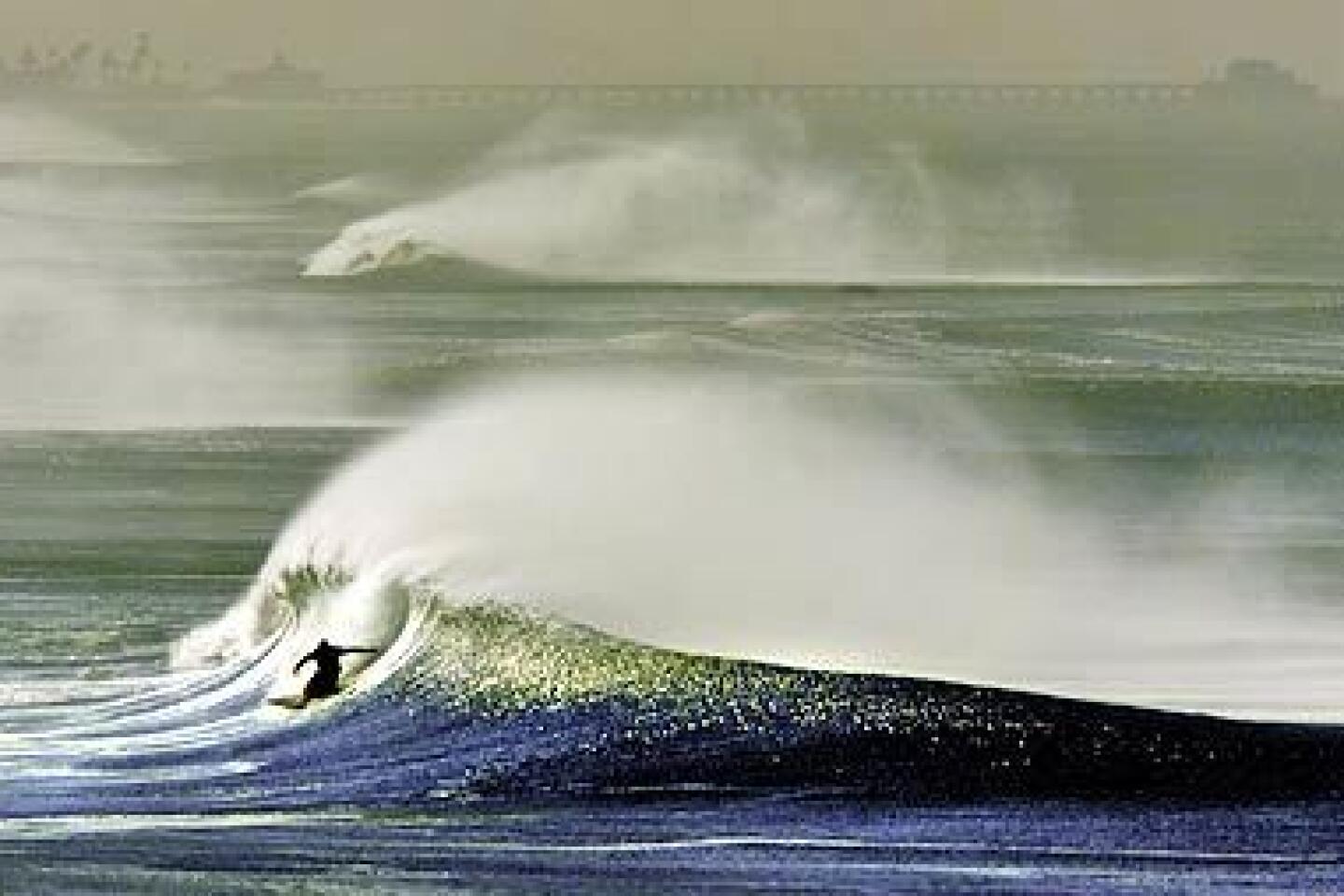Where sand is always hot
WE all live for the sun. At least, that’s the case in Southern California. How many people have high-tailed it west after watching cutaway shots of surfers and inline skaters wearing hardly anything during the Rose Bowl broadcast every January? The irresistible combination of boards and bods works like catnip, luring countless thousands to Los Angeles. The beach is a tranquil oasis for those who prefer to live outside the mainstream.
With its cafes, sleazy corners and cheap rent, Venice has been L.A.’s prime bohemian outpost since the 1950s, while Santa Monica has been a more conventional beach town. But when Sandra Dee got on her board in the 1959 film “Gidget,” a full-blown mania was born. A tidal wave of surf-themed films and music hit the market, and kids across America wanted to hop on a board and ride.
The utopia of life on the sand was accompanied by a stirring soundtrack. Dick Dale’s cascading guitar riffs captured the sound of breaking waves on tracks such as “Miserlou”; the Beach Boys’ Brian Wilson created heartbreaking sonic operas about the girls on the beach.
But it was surfing that offered the ultimate rebel seduction. With just a board and his wits, the surfer was in solitary communion with the sea. Surfing represented the ultimate freedom — Australian surfer Nat Young even tried to make surfing an official religion — a point driven home in 1964’s benchmark documentary “Endless Summer” and again a decade later in “Big Wednesday.”
Surfers lived to ride. They even developed their own slang, some of which — “tubular,” “gnarly” — was later co-opted by kids in the San Fernando Valley, of all places. Pretty soon, it had spread to teenagers nationwide. Surfers were golden gods, and they would live forever.
The beaches themselves became larger cultural symbols. Venice was the hippie enclave, its boardwalk an endless carnival of freaks and freakouts. Santa Monica was the “People’s Republic,” land of rent control and Tom Hayden. Malibu was the colony, home of celebrities and the wealthy, who jealously guarded their beachfront property. Outsiders could dream according to their own demographic profiles.
The media’s portrayal of the beach in film, music and television often perpetuates a fantasy of a coastal utopia. As with everything seen through a media filter, a lot of that is pure hype.
The reality is that many locals rarely make it to the beach. But when you get into your car and drive up Pacific Coast Highway, you think: I’m pretty lucky to be here.



